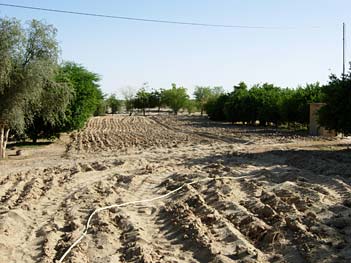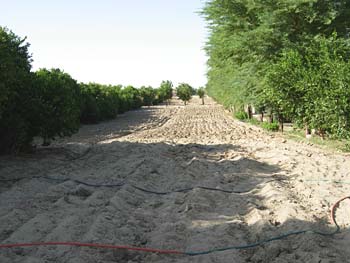Why might you be interested in analyzing soil for nutrients? Here are some reasons why this might be done:
- Calculation of fertilizer application rates and nutrient requirements
- Development of nutrient management plans
- Environmental protection (especially water quality)
- Maintaining (or improving) soil quality
- Development of sustainable land management
- Growing healthy plants (home gardening to large-scale agriculture)
- Preventing plant nutrient deficiencies
- Studying changes in the soil and nutrient cycling
Plant nutrients are essential for plant growth. Without the proper nutrient balance, plant growth is stunted or completely prevented in the case of extreme deficiency. Any deficiency of plant nutrients will result in reduction of crop production.
Plant growth is limited by the element that has the lowest level of availability relative to the required amount. Deficiencies are manifested in a variety of ways, from leaf discoloration to extreme stunting of growth. There are several factors that complicate identification of nutrient deficiency in plants. For example, a nutrient present at a low level may cause deficiency symptoms, while the same nutrient at a higher level may cause toxicity. Further, deficiency of one element may present as symptoms of toxicity from another element. Interactions between elements can further complicate things, since an abundance of one nutrient may cause a deficiency of another nutrient.
Essential Elements for Plant Growth
| Macronutrients | Micronutrients |
| Carbon (C) | Iron (Fe) |
| Hydrogen (H) | Manganese (Mn) |
| Oxygen (O) | Boron (B) |
| Nitrogen (N) | Zinc (Zn) |
| Phosphorus (P) | Copper (Cu) |
| Potassium (K) | Chlorine (Cl) |
| Sulfur (S) | Cobalt (Co) |
| Calcium (Ca) | Molybdenum (Mo) |
| Magnesium (Mg) | Nickel (Ni) |
The elements essential for plant growth are usually divided into macronutrients and micronutrients; both are equally critical, just required in different quantities.
Without adequate nutrient availability, plant growth is stunted and crop production is low, potentially leading to food shortages. Consequently, nutrient depletion of soils is one of the key contributing factors to food insecurity, malnutrition, and ecosystem degradation in many developing countries around the world.

References and Resources
- Alberta Agriculture and Food. 2008. Nutrient Management Planning Guide. Chapter 2: Nutrient cycling and interactions. Available here.
- Brady, N.C., and R.R. Weil. 2008. The Nature and Properties of Soils. 14th edition. Pearson Prentice Hall, Upper Saddle River, NJ.
- Carter, M.R., and E.G. Gregorich (eds). 2008. Soil sampling and methods of analysis. 2nd ed. Canadian Society of Soil Science, CRC Press and Taylor & Francis Group. Oxford, UK.
- International Plant Nutrition Institute. 2010. Norcross, GA. www.ipni.net/
- Sanchez, P.A. 2002. Soil fertility and hunger in Africa. Science. 295:2019-2020. Available at: www.sciencemag.org/cgi/reprint/295/5562/2019.pdf
- Soil Survey Staff. 2009. Soil Survey Field and Laboratory Methods Manual. Soil Survey Investigations Report No. 51, Version 1.0. R. Burt (ed.). U.S. Department of Agriculture, Natural Resources Conservation Service. Version 2.0 (2014) available at: https://www.nrcs.usda.gov/Internet/FSE_DOCUMENTS/nrcs142p2_052226.pdf
- Sparks, D.L. (ed). 1996. Methods of Soil Analysis: chemical methods. Part 3. Soil Sci. Soc. Am. Book Series No. 5. ASA-SSSA, Madison, WI.
- Westerman, R.L. (ed) 1990. Soil Testing and Plant Analysis. 3rd edition. ASA-SSSA, Madison, WI.

